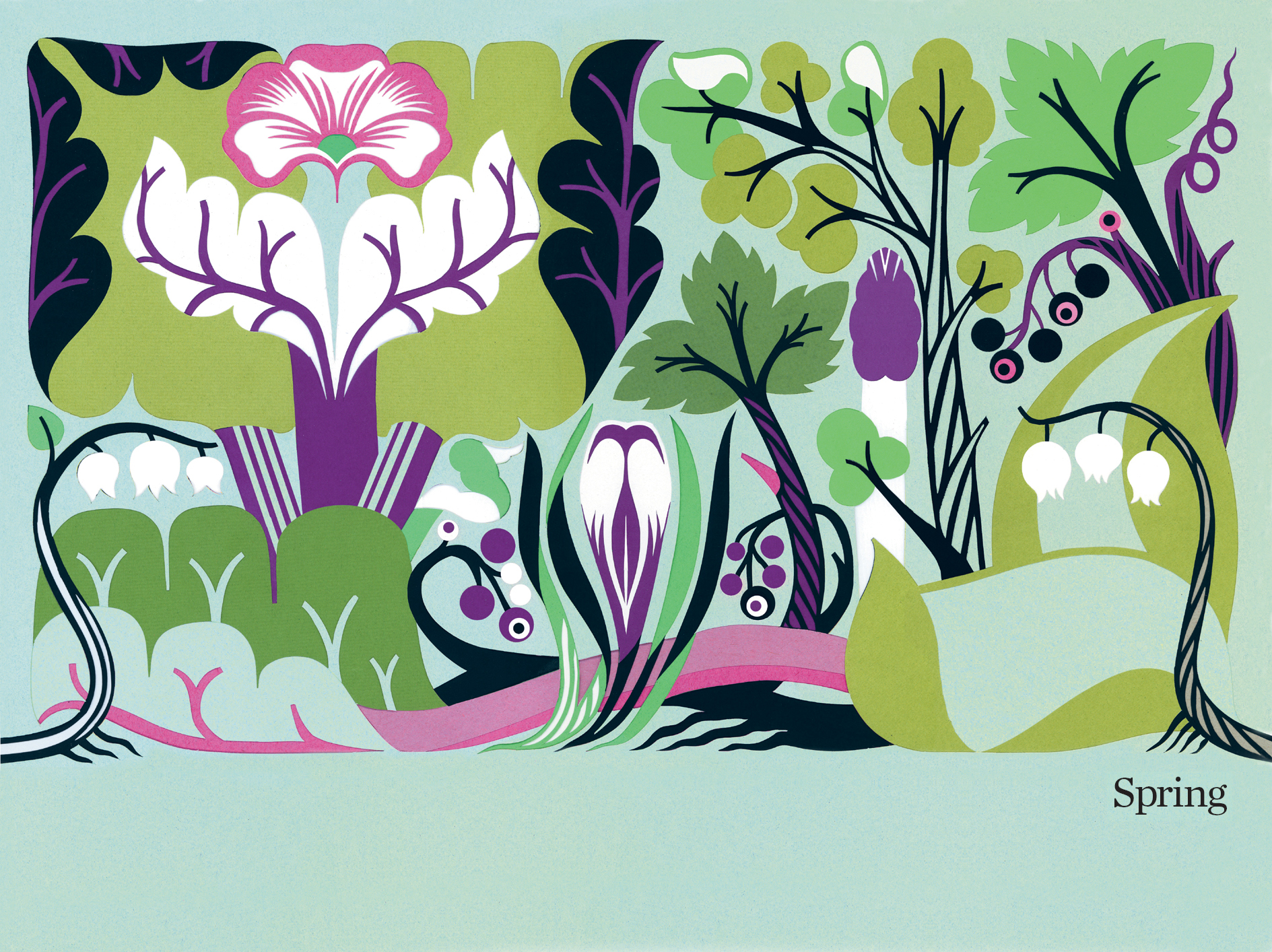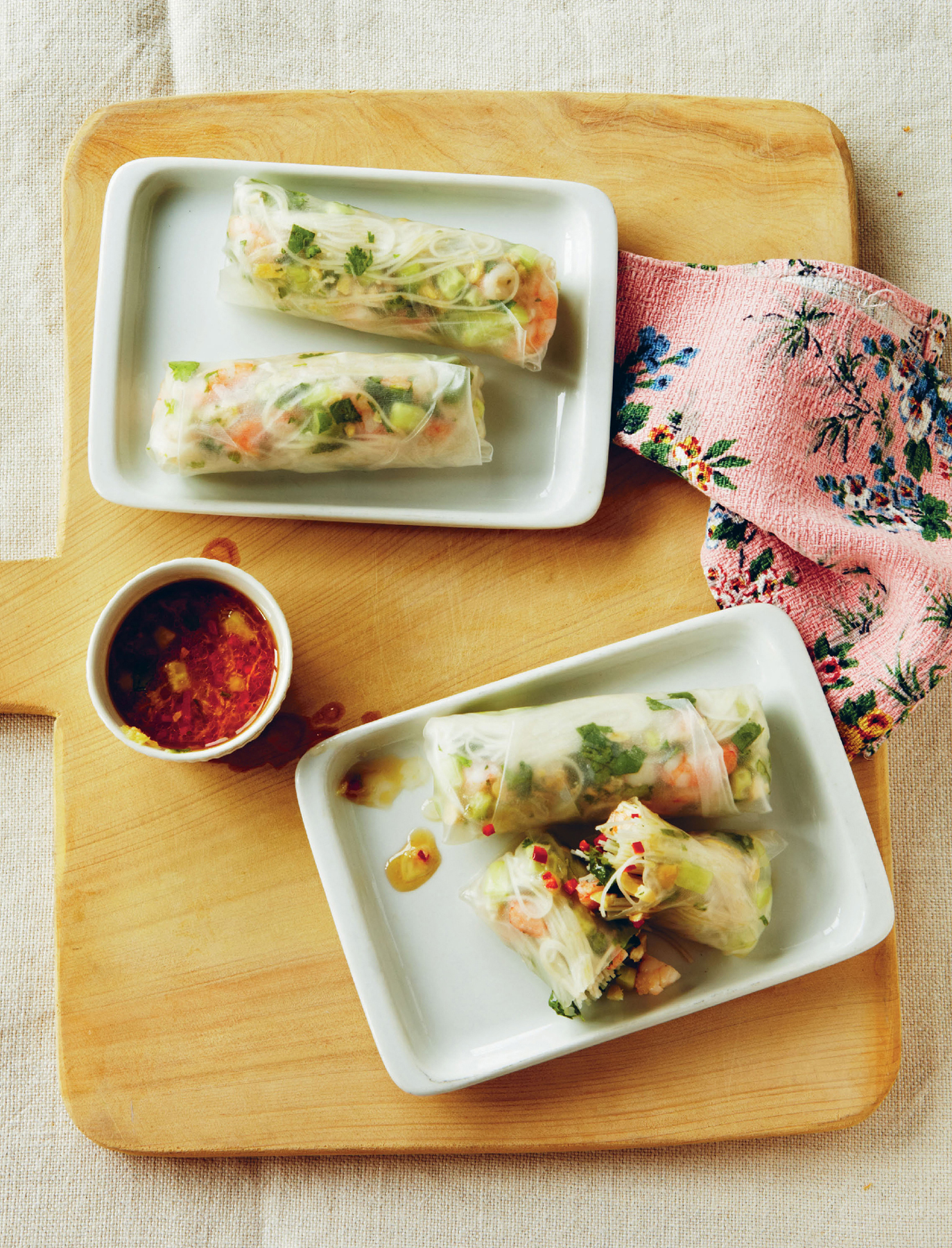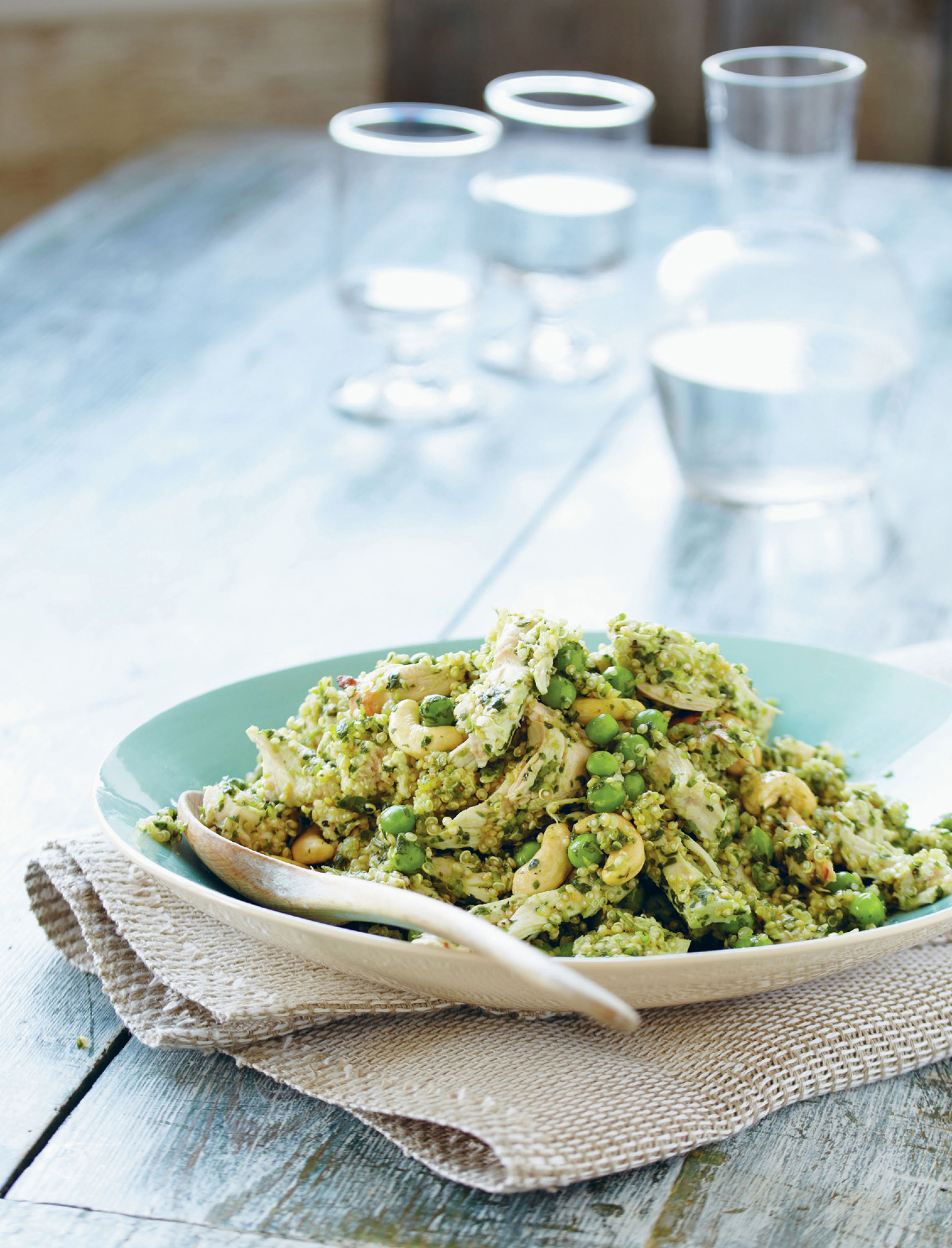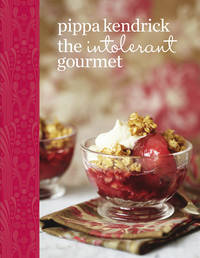
Полная версия
The Intolerant Gourmet: Free-from Recipes for Everyone
Cornflour: also known as cornstarch and based on maize. It helps to thicken sauces and custards.
Xanthan gum: a plant gum that acts like the gluten found in wheat. Xanthan gum is the holy grail of allergy-friendly baking; it helps breads come together, pastry to roll and flatbreads to bend. It is the must-have staple of any allergy-friendly storecupboard.
Following the recipes
The recipes in this book are designed to work together – you can choose a selection of dishes from each section within one season and they will blend together to create a harmonious menu. When following the recipes, however, you’ll need to bear in mind that allergy- and intolerance-friendly ingredients often don’t work in the same way as their allergenic counterparts. For example, gluten-free flours are often far more absorbent than wheat flour and so require different quantities of liquids and fats to combine with them. Equally, using sunflower margarine as a replacement for butter is a useful and easy alternative, but margarine is simply a blend of vegetable oils and so when heated or over-whipped, its stability can change and affect the end result. When you cream the margarine and sugar in a baking recipe you should use a wooden spoon and lightly cream the mixture by hand, until incorporated. Beating the mixture too hard or for too long, and/or using an electric whisk, can cause the margarine to separate, which will result in an oily or ‘fried’ texture in your baking.
The particular blends of flours and the other substitutes (whether milk, egg or butter) that I use have been specifically chosen, from personal trial and error, to create the best possible results. For that reason I would always recommend that you use the ingredients suggested as I cannot guarantee the same success if you use your own substitutions. That being said, experimentation certainly helped me, and so if you want to adapt the recipes using your own choice of ingredients, then go right ahead. Just be aware that you may have to adapt other parts of the recipe too.
Cooking notes
Fan oven temperature: if you have a fan oven, please reduce the temperature given in the recipe by 20°C/70°F.
Stocks: if not using homemade, please refer to Products and Stockists for details of intolerance-friendly varieties of fresh stock, stock powder and stock cubes.
Teaspoon/tablespoon measures: 1 teaspoon = 5ml/½fl oz; 1 tablespoon = 15ml/½fl oz.


Spring
Spring imbues us with renewed energy and enthusiasm, and spring cooking should reflect this: we can say goodbye to the rich stews, hearty pies and warming soups of winter and reintroduce colour and crunch to our dishes. The Chicken, Watercress and Quinoa Salad, for instance, offers a lemony zing and seasonal, peppery bite, while the Herbed Lamb on a Bed of Leeks and Cannellini Beans combines tender spring lamb with the mellow flavour of softened leeks to ring in the season. The fresh, tangy theme carries through to the puddings: in the Rhubarb Streusel Tart the intense, sharp flavour of rhubarb is softened by the rich pastry and buttery, ginger crunch of the streusel topping. All the recipes in this section make the most of what’s in season to embody this revitalising time of year.
Carrot and Coriander Soup
Soup is one of life’s nurturers; it both sustains and comforts, warming one in body and soul, whatever the weather. For me, the best soups are the simplest: take some good-quality ingredients and cook them together slowly and you can’t go wrong. This wonderfully vibrant soup is just the thing for a spring lunch; fruity and fragrant, and served with a slice of my Quinoa Bread, it will brighten up any day.
Serves 4–6
—
1½ tbsp olive oil
1 large onion
1 potato (unpeeled)
700g/1½lb carrots
1.2 litres/2 pints vegetable stock
A bunch of coriander
Juice of ½ orange
Sea salt and freshly ground black pepper
Pour the olive oil into a large saucepan and place over a medium heat. Roughly chop the onion and add to the oil, cover with a lid and allow it to sweat for 4–5 minutes or until softened and beginning to turn translucent.
Chop the potato into 1cm/½in cubes and add to the onion. Cover again with the lid and cook for around 5 minutes, stirring frequently, until the potato has taken on a light sheen and is slightly softened.
Halve the carrots lengthways and chop into half-moon segments, then add to the potato and onion, season with salt and pepper and leave to cook for about 15 minutes, covered but stirring frequently, until the carrots and potato are tender.
Add the stock to the vegetables and bring to the boil, then reduce the heat to low and leave to simmer for 10 minutes.
Remove the soup from the heat and allow to cool down slightly. Finely chop the coriander and add it, along with the orange juice, to the soup. Using a hand-held blender or food processor, blitz the soup until smooth and velvety. Season with salt and pepper to taste, then heat through to serve.

Garden Soup
This soup is a variation on one of my mum’s creations. So called because she always uses whatever is freshest and in greatest abundance in the garden, it manages to taste both rich and wonderfully fresh. My mum makes it with chicken stock (homemade, of course) for a satisfying, savoury depth of flavour, but you could use vegetable stock instead. And feel free to play around with whatever is in season: extra leeks, asparagus or spinach are all wonderful additions, although I would avoid adding any of the brassica variety (cabbage, sprouts, broccoli, etc.) as they tend to overpower. Serve hot with my Crusty White Loaf, warmed through, for ultimate satisfaction.
Serves 4
—
2 cloves of garlic
2 sticks of celery
1 leek
1 large red onion
2 carrots
1 potato
1 small sweet potato
1½ tbsp olive oil
1 courgette
100g/3½oz frozen peas
1.2 litres/2 pints chicken or vegetable stock
A small bunch of curly-leaf parsley or watercress
Sea salt and freshly ground black pepper
Finely chop the garlic, celery, leek and onion. Peel the carrots, potato and sweet potato and dice into small chunks. Pour the olive oil into a large saucepan set over a medium heat, cover with a lid and sweat the onion, garlic, leek and celery for 4–5 minutes or until soft and translucent. Season well with salt and pepper, then add the carrots, potato and sweet potato and continue to sweat, with the lid on the pan, for a further 10 minutes or until they begin to soften.
Dice the courgette and add to the vegetables with the peas, then pour over the stock, cover again with the lid and bring to the boil. Once boiling, reduce the heat to low and simmer for 25 minutes.
Finely chop the parsley or watercress and stir into the soup. Remove from the heat and allow to cool for a few minutes, then, using a hand-held blender or food processor, blitz half of the soup, leaving the rest unpuréed for a chunky-textured finish. Season with salt and pepper to taste, then heat through to serve.

Warm Greek Salad sans Feta
This is one of my favourite salads – a lovely combination of bright colours and intense flavours. Here, the aubergine takes the place of the feta, its tender flesh melding with the sweetness of the peppers, the aroma of the mint and salty tang of the olives. I love to make this when friends come to visit – it’s so simple to prepare but tastes quite complex and is really versatile. Served with a few green leaves and a slice of bread, it makes a refreshing light lunch, but it works equally well as an accompaniment to a larger meal. For a delicious supper menu, it would go wonderfully with my Spring Chicken with Lemon and Herbs and Roasted Sweet Potatoes.
Serves 4
Contains nuts
—
25g/1oz pine nuts
1 red onion
1 red pepper
1 yellow or orange pepper
1 large aubergine
1 clove of garlic
2 tbsp extra-virgin olive oil
1 tsp soft light brown sugar
½ cucumber
20 cherry tomatoes
15 pitted black olives
A bunch of mint
Juice of ½ lemon
Sea salt and freshly ground black pepper
Preheat the oven to 200°C/400°F/gas mark 6.
Scatter the pine nuts on a baking tray and toast in the oven, turning occasionally to make sure they don’t burn, for 5–6 minutes or until golden brown, then remove and set aside to cool.
Halve the onion, slicing it into thin half-moons, then deseed the peppers and cut lengthways into strips about 5mm/¼in thick. Trim the ends from the aubergine and cut into chunks approximately 2cm/¾in in size. Crush the garlic and place in a large roasting tin with the onion, peppers and aubergine. Drizzle over half the olive oil, tossing to combine, then sprinkle over the sugar and season with salt and pepper. Roast in the oven for 25–30 minutes or until all the vegetables are softened and browned around the edges.
Meanwhile, peel the cucumber and cut into 1cm/½in cubes, then halve the cherry tomatoes and black olives. Place in a large serving bowl with the roasted vegetables and mix together. Finely chop the mint and scatter over the salad, along with the toasted pine nuts. Pour over the remaining olive oil and the lemon juice, season with salt and pepper to taste and toss together so that the salad is thoroughly mixed and coated in the dressing. Serve while warm.

Prawn Noodle Rolls with Thai Dipping Sauce
These little rolls are a beautifully packaged treat, perfect for a starter or served as part of a larger spread. They look and taste as though you have gone to a lot of effort but are in fact really simple to make. They have a light and clean flavour, while the combination of the rice noodles, sweet prawns, crunchy cashew nuts and cucumber provides a satisfying bite. The dipping sauce is a necessity and, if you wish, you can add a little to the filling of each roll before closing it. You can find spring roll wrappers in Asian stores or health food shops.
Makes 12 noodle rolls
Contains nuts
—
110g/4oz cucumber
A small bunch of coriander
50g/1¾oz roasted and salted cashew nuts
100g/3½oz fine rice noodles
1 tsp toasted sesame oil
250g/9oz cooked and peeled prawns
12 spring roll wrappers (16cm/6½in in diameter)
For the dipping sauce
1cm/½in piece of root ginger
1 red chilli
A small bunch of coriander
1 tbsp soft light brown sugar
Juice of 2 limes
2 tsp toasted sesame oil
A pinch of sea salt
First prepare the dipping sauce. Peel and finely grate the root ginger, deseed the chilli and finely chop it and the coriander, then mix in a bowl with the remaining ingredients and 3 tablespoons of water. Cover and chill in the fridge until ready to use. (Left covered in the fridge, it will keep for 48 hours.)
Next peel the cucumber and cut into cubes about 5mm/¼in in size, finely chop the coriander and roughly chop the cashew nuts.
Cover the rice noodles in boiling water and leave for as long as instructed on the packet (usually around 10 minutes). Once soft and pliable, drain and place in a large bowl. Pour over the toasted sesame oil, then add the prawns, cucumber, coriander and cashew nuts and mix together until combined.
Prepare the spring roll wrappers by immersing each in cold water for a few seconds and then placing on a clean tea towel for 1 minute to allow it to soften.
Transfer each softened wrapper to a chopping board and spoon about 2 tablespoons of the rice noodles and prawns along the centre of the wrapper. Fold in two opposing sides of the wrapper and then fold over one of the remaining sides to cover the filling by about a third. Continue to roll the wrapper so that the filling is completely enclosed. Set aside on a plate and continue this process with each sheet of rice paper until you have made all of the noodle rolls.
You can then either serve the rolls immediately with the dipping sauce or cover and refrigerate for a few hours until ready to serve.

Falafel with Parsley and Tomato Salad
I simply adore falafel – dense, fragrant and completely moreish. A perfect treat when served as a starter, they are equally wonderful as part of a larger feast – my Honey-baked Leg of Lamb and Persian Jewelled Quinoa spring to mind. I like to serve them with a tomato and parsley salad – a variation on the Middle Eastern tradition of serving a bowlful of mixed fresh herbs with a meal. I think it lends the perfect bite and contrast to the softly spiced falafel. A dab of houmous wouldn’t go amiss either.
Serves 4
—
1 white onion
1 clove of garlic
1 x 400g tin of chickpeas, drained and rinsed
½ tsp sea salt
1 tsp ground coriander
1 tsp ground cumin
¼ tsp chilli powder
2 tbsp gluten-free plain
flour (ideally Doves Farm)
2 tbsp groundnut or rapeseed oil
For the salad
A very large bunch of flat-leaf parsley
2 ripe tomatoes
½ red onion
1 tbsp extra-virgin olive oil
Sea salt and freshly ground black pepper
Finely chop the onion and crush the garlic, then place in a food processor with the chickpeas, sea salt and spices and blitz until you have a rough paste. Tip the mixture into a bowl, cover and chill in the fridge for up to an hour or until firm.
Scoop up a tablespoonful of the chickpea mixture and, using the palms of your hands, carefully form it into a small round cake, approximately 2.5cm/1in in diameter. Repeat with the rest of the mixture to form about twelve falafel, then coat lightly and evenly in the flour and return to the fridge until ready to fry.
Next prepare the salad, first trimming the stalks from the parsley. Skin the tomatoes by placing them in a bowl, covering in boiling water and leaving for 1 minute. Drain and carefully peel away the tomato skins (they should slide off with ease), then slice in half, scoop out the seeds and finely dice the flesh. Dice the onion and combine in a bowl with the tomatoes and parsley leaves. Drizzle with the olive oil, season well with salt and pepper and toss lightly.
Heat the groundnut or rapeseed oil in a heavy-based frying pan and fry the falafel over a medium heat for about 3 minutes on each side or until golden all over – you may have to do this in two batches, depending on the size of your pan. Serve while hot with a handful of the fragrant parsley and tomato salad.

Chicken, Watercress and Quinoa Salad
This salad is light and crisp with a wonderful lemony, garlic zing. I love the combination of peppery watercress, succulent roast chicken and savoury quinoa. It is actually a very simple dish to create, especially if you are using leftover chicken, making it ideal to cook the day after roasting a chicken. You could even strip the meat from the chicken and then boil up the carcass with a few vegetables and a bouquet garni for some fabulous, homemade stock – perfect for using to cook the quinoa.
Serves 4
Contains nuts
—
2 cloves of garlic
150g/5oz watercress
Grated zest of 1 lemon and juice of ½ lemon
175g/6oz quinoa
500ml/18fl oz chicken or vegetable stock
200g/7oz frozen peas
50g/1¾oz unsalted cashew nuts
350g/12oz cooked chicken
2 tbsp extra-virgin olive oil
Sea salt and freshly ground black pepper
Peel the garlic and blitz in a food processor with the watercress and lemon zest until very finely chopped.
Place the quinoa in a saucepan and pour over the stock, then cover with a lid and bring to the boil. Once boiling, reduce the heat to its lowest temperature and leave to simmer very gently for 10 minutes. After 10 minutes, lift the lid and add the peas, then re-cover and cook for a further 5 minutes or until all of the stock has been absorbed by the quinoa. Remove from the heat and set aside to cool down.
In a heavy-based frying pan, dry-fry the cashew nuts over a medium–high heat for 3–4 minutes or until golden, shaking the pan regularly to ensure that they don’t burn. Remove from the heat and season well with salt and pepper.
Next cut the chicken into small cubes, approximately 1cm/½in in size. Once the quinoa has cooled, fluff up with a fork and transfer to a large serving bowl. Gently stir in the watercress paste, add the chicken and cashew nuts, pour over the lemon juice and olive oil and season well with salt and pepper to taste. Toss thoroughly until well mixed and then serve.

Chicken with Orange, Fennel and Olives
I love the combination of oranges and olives – they seem made for one another, adding the kind of bright flavour to a dish that conjures up images of their sun-baked, Mediterranean origins. I recommend serving this with steamed white basmati rice, all the better to absorb the wonderful juices that pool around the roasted chicken and fennel. In addition to the rice, you could serve it with a green salad mixed with fresh herbs, although it would work equally well with wilted spinach or kale with perhaps a splash of garlic oil.
Serves 4
—
1 large red onion
2 fennel bulbs
2 cloves of garlic
A small bunch of curly-leaf parsley
3 tbsp olive oil
Grated zest of 1 orange and juice of ½ orange
4 skinless chicken breasts
100g/3½oz pitted black olives
Sea salt and freshly ground black pepper
Preheat the oven to 200°C/400°F/gas mark 6.
First prepare the vegetables. Halve the onion and slice into thin half-moons, then trim the fennel bulbs and cut widthways into thin rounds. Crush the garlic and finely chop the parsley.
Combine 1 tablespoon of the olive oil and the orange juice in a bowl and season with salt and pepper. Using a sharp knife and cutting to a depth of 5mm/¼in, score each chicken breast diagonally three times (this will help the meat to cook evenly). Place in the orange marinade, stirring each breast in the mixture to ensure it is thoroughly coated, and set aside for at least 30 minutes.
In a large ovenproof dish or roasting tin, combine the onion, garlic, fennel, orange zest and olives with the remaining olive oil. Mix thoroughly, season well with salt and pepper and place in the oven to cook for 15 minutes.
Remove from the oven, stir well and then place the chicken breasts on top of the fennel and onions. Season lightly with salt and pepper and return to the oven to bake for 15 minutes or until the chicken is cooked through and, when pierced with a skewer, the juices run clear. Sprinkle with the chopped parsley and serve while hot, on a bed of white basmati rice.
Chicken Rogan Josh
Rogan josh is one of those versatile curries that can be adapted to suit your palate. By that I mean that if you like your curries hot, rogan josh lends itself to the addition of a few extra chillies without losing any of its complexity of flavour. There is something reassuring about a sauce made of tomatoes and onions; it can really hold its own with a whole array of herbs and spices, while the ground almonds, when cooked, add a buttery note to the curry that enhances the whole dish.
Serves 4
Contains nuts
—
6 skinless and boneless
chicken thighs
2 red onions
3 cloves of garlic
1 red chilli (or more if you prefer)
2 large tomatoes
3 cardamom pods
2 tbsp groundnut or rapeseed oil
1 tsp chilli powder
2 tsp ground cumin
1 tbsp ground coriander
1 tsp turmeric
1 tsp ground ginger
1 tsp soft light brown sugar
A good pinch of sea salt
1 tbsp tomato purée
1 x 400g tin of chopped tomatoes
5 tbsp ground almonds
1 tsp garam masala
A small bunch of coriander
Begin by cutting the chicken thighs widthways into slices about 1cm/½in thick. Halve the onions, slicing them into thin half-moons, crush the garlic and slice the chilli (or chillies) into fine rounds, keeping the seeds. Cut the tomatoes into quarters and crush the cardamom pods with the flat side of a knife.
Heat the groundnut or rapeseed oil in a heavy-based saucepan, add the onions and sauté gently over a medium heat for 5–6 minutes or until soft but not browned. Stir in the chilli powder, cumin, ground coriander, turmeric, ginger, sugar, crushed cardamom pods and salt. Cook the spices for a minute or two or until fragrant, then add the tomato purée, garlic and fresh chilli, and continue to sauté for a further 2–3 minutes.
Add the chicken and mix in thoroughly so that all the pieces are coated in the spice mixture. Pour over the chopped tomatoes, along with 150ml/5fl oz water, and add the tomato quarters. Cover with a lid, then bring to the boil, reduce the heat to low and simmer for 30 minutes or until the chicken is tender.
Once the curry is cooked, stir in the ground almonds and garam masala and simmer gently, uncovered, for about 5 minutes or until the sauce has thickened. Finely chop the coriander, sprinkle over the top of the rogan josh and serve with steamed white basmati rice.
Lemon and Cashew Nut Rice
This mildly spiced rice is ideal for serving alongside any of the curries in this book. Indeed, it provides a fresh and zesty accompaniment to any Indian meal.
Serves 4
Contains nuts
—
50g/1¾oz unsalted
cashew nuts
½ tbsp groundnut or rapeseed oil 175g/6oz white basmati rice
½ tsp turmeric
A bunch of coriander
Grated zest and juice of 1 lemon
Sea salt and freshly ground black pepper
In a heavy-based frying pan, dry-fry the cashew nuts over a medium–high heat for 3–4 minutes or until golden, shaking the pan regularly to ensure they don’t burn. Remove from the heat, season with salt and set aside to cool.
Pour the groundnut or rapeseed oil into a large saucepan and place over a medium heat. Add the rice and turmeric and gently fry for 1 minute, stirring continuously. Pour over 500ml/18fl oz water, cover with a lid and bring to the boil. Once boiling, reduce the heat to low and leave the rice to simmer for 10–15 minutes or until all of the water has been absorbed and the rice is fluffy.
Remove from the heat and leave to stand for a minute or two before fluffing up with a fork. Finely chop the coriander and stir into the rice with the toasted cashews, lemon juice and zest. Season with salt and pepper to taste and then serve.



